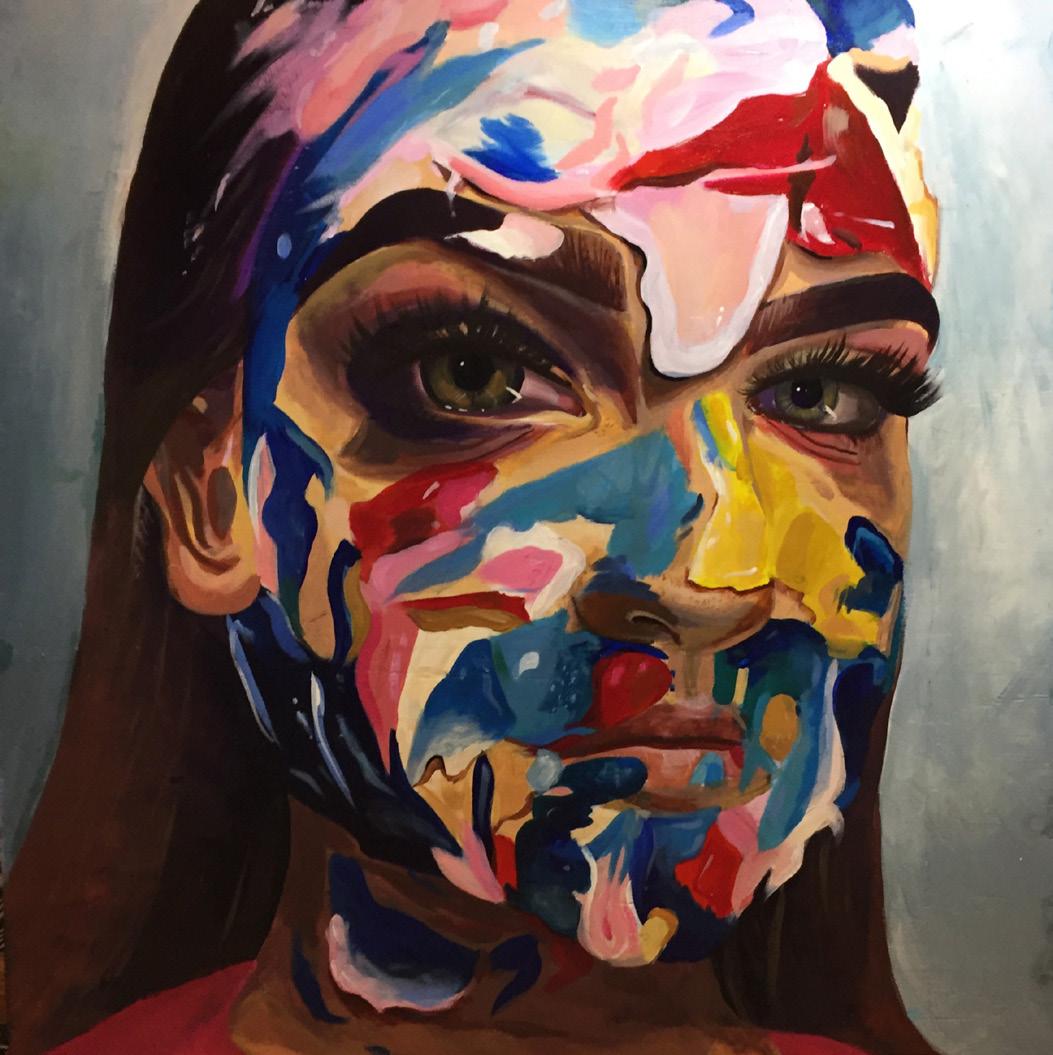
1 minute read
Eliza Daniels
The saying goes “a picture can tell a thousand words,” and I always find it intriguing when those thousand words tell a story, regardless of whether it has been told thousands of times before or if it is a brand new one. I want to share those stories, preserve them and retell them in a new light. By reintroducing older stories or mythologies that might have been forgotten or never learned by newer generations, I hope to tell them again because many times these older stories and the morals they contain are just as relevant today.
Details are extremely important to me, no matter how small. I find a story, re-read it several times, look if it has other versions and sort out which elements would be most important for both the story and the artwork itself. The sculpture, The Pandora, explores the Ancient Greek myth of the first female human, and is made in an abstract shape of a figure. The use of metal in the sculpture represents the many versions of the myth stating that Hephateus, the god of the forge and metalworking, originally was her creator. The colorful thread that makes up the ‘skirt’ reflects both how Pandora’s name roughly means ‘all gifted’ and how each of the Olympians had a part in making her.
Advertisement
Some tales are as old as time; others are brand new, barely churning around in my head before being placed down on paper or made into a physical form. Many stories I’ve heard or thought of in my life functioned both as a way to learn something and also as a way to escape reality for a short period of time. I want to tell those stories, but leave the interpretation up to the viewer or reader to decide. There is not only one particular thing a person can learn from a picture or sculpture, just like there is no one way to tell a story or one version of a story.
The Pandora; metal and sewing thread










